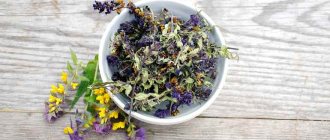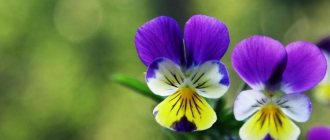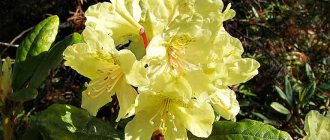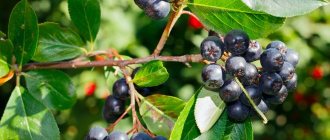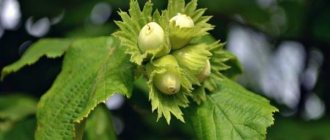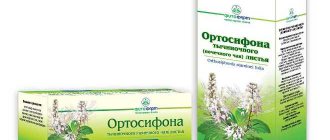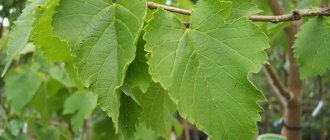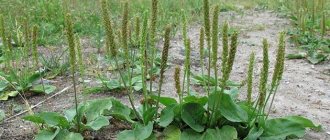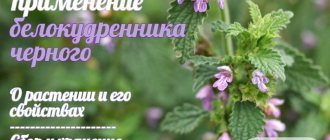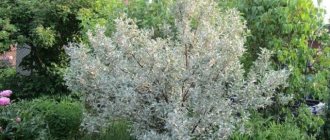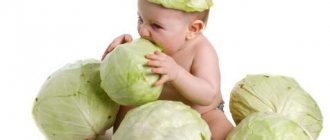Botanical description of Datura
The Datura plant is a herbaceous annual that belongs to the nightshade family. In Russia, it is widespread in the Astrakhan region and the lower reaches of the Volga. Datura grass grows in garbage dumps, ditches and along roads.
Datura has a powerful root system and an erect, forked, branched stem. The leaves of the plant are dark green in color, oval in shape with jagged edges. The flowers are large, single, and look like a small white lily. They emit a sickly sweet aroma. The capsule fruits are covered with sharp thorns and are divided into four sections. The seeds are small, matte black. Up to 800 pieces ripen in one box.
It should be noted that Datura is a source of the following substances:
- atropine;
- carotene;
- hyoscyamine;
- tannins;
- scopolamine;
- essential oils.
Datura flower: photo and description
This herbaceous plant grows up to one and a half meters in height. It has a powerful stem and large leaves with teeth. The rhizome is taprooted, thick, and white. The flowers are large, white or purple in color, and emit a pleasant scent. They have the shape of a small lily and are located one at a time in the convolutions of the stem. The flower has five petals - they open in the evening.
The fruit of the “drunk cucumber” is a box with needles, consisting of five compartments. Each fruit contains up to 800 seeds. The plant blooms from July to September, the fruits ripen by mid-October. If you rub a Datura leaf in your hand, you will smell an unpleasant odor. Most often, the plant is found in groups; it almost does not grow alone.
Datura in the garden plot
In addition to the common datura, there are also decorative species. They are used to decorate flower beds and garden plots.
The following varieties are used as decorative ones:
- Flora Pleno. Blooms double purple flowers with yellow specks inside.
- Ballerina. Inflorescences are in the form of fused funnels of 2-3 rows, from purple to light yellow.
- Inermis. Complete absence of thorns on the fruits.
- Medea. Large snow-white flowers 20–25 cm long.
- Tatula. Small inflorescences of lilac-blue color.
Thanks to its abundant flowering, the ornamental datura has won the recognition of gardeners. The fragrant aroma of the plant will mask the unpleasant odor from a cesspool or compost heap. The decorative properties of grass are used in flower beds and front gardens.
Datura vulgaris - instructions, composition, dosage, side effects of use
Datura common
(Datura stramonium L.) Russian names: dope, drunken, drunken cucumbers, thistle, durzel, thorns, kings, stupor grass. Belarusian: durnap'yan zvychayny, durnap'yan smardzyuchy. Ukrainian: datura zvichainy, dur, stinking dur, pigs.
title=”Datura” /
Datura common is an annual plant of the nightshade family (Solanaceae), up to 120 cm high. The root is spindle-shaped, white. The stem is erect, branched, arched, hollow inside. The leaves are large, alternate, narrowed into a petiole, with large notches and sharp teeth; when rubbed, they emit an unpleasant odor. The flowers are large (up to 12 cm), white, solitary, located in the axils of the leaves and forks of the stem, and have a stupefying sweet smell. The corolla is sphenoletal, with a long tube and a wide bell-shaped limb. The fruit is an erect, ovoid capsule, covered on the outside with sharp green spines (up to 1 cm long). There are from 500 to 800 seeds in a box. The seeds are large, matte black, flattened, kidney-shaped, and germinate in the spring. It blooms in July - September, the fruits ripen from July to October. Propagated by seeds. Distributed in the European part of the CIS, Crimea, Western Siberia, Ukraine and the Caucasus. Datura grows in fresh soil near housing, in vacant lots, garbage areas, on the slopes of ravines and river banks. Selects rich, loose and fairly moist soils. It is usually found in clumps, less often scattered. The plant is very poisonous!
People have long paid attention to the effects of this plant. In India, since ancient times, there was even a profession of “datura poisoners”. But it was used mainly as a means to induce hallucinations. It is believed that the ecstasy of the Pythia at Delphi was caused by this plant. The sanctuary of Apollo in Delphi, founded by the god of light at the site of the death of the terrible serpent Python, was famous all over the world. In the sanctuary, the priestess Pythia gave predictions. These predictions were made in a state of ecstasy and often included a set of words that could be interpreted in different ways. Nevertheless, this sanctuary was widely known in the ancient world. In the 16th century, Datura appeared in the vicinity of Vienna, where it was used as a drug. Its seeds were thrown onto hot coals and the poisonous smoke was inhaled, thus achieving narcotic intoxication.
Collection and drying of raw materials . The medicinal raw materials are the leaves and seeds of Datura. Leaves are collected from the beginning of flowering of the plant until the onset of frost, in dry weather (leaves collected with dew or after rain quickly darken), tearing them off by hand. During the growing season, 3-4 collections are carried out, starting with the collection of leaves from the lower tiers. The collected leaves are immediately dried in dryers at a temperature of about 40 ° C, and in good weather - outdoors in the shade. Drying is completed when the midrib becomes brittle. After working with raw materials, you must wash your hands thoroughly due to the toxicity of the plant. The shelf life of raw materials is 2 years. Raw materials that have expired are burned. Seeds are harvested in the fall from ripe fruits, sorted and dried in a dryer or oven. Shelf life: 2 years.
Valerian officinalis. Application in medicine. - instructions, composition, dosage, side effects of use
Chemical composition . All parts of the plant contain alkaloids (up to 0.37%), of which the main ones are hyoscyamine, atropine and scopolamine. The leaves also contain essential oil (0.04%), carotene (up to 0.1%) and tannins (1.7%), and the seeds contain fatty oil (up to 25%). The largest amount of alkaloids accumulates in the plant at the end of summer and remains constant until the end of the growing season.
The leaves contain: ash - 12.36%; macroelements (mg/g): K - 37.60, Ca - 31.10, Mn - 7.00, Fe - 0.35; trace elements (CBN): Mg - 0.26, Cu - 0.56, Zn - 0.93, Co - 0.11, Mo o72.00, Cr - 6.10, Al - 0.15, Ba - 15, 23, Se - 4.10, Ni - 0.10, Sr - 2.18, Pb - 0.09, I - 0.45. B - 131.60 µg/g. Cd, V, Li, Au, Ag, Br were not detected. Concentrates Zn, Sr, Mo, Ba, Se, B, especially Mo, Ba, Se.
Pharmacological properties . Datura vulgaris is characterized by the general pharmacological properties of atropine-like compounds, which are defined mainly as m-cholinolytic agents that block the functional activity of the body's m-cholinoreactive systems. In its native form, Datura vulgaris is used for the preparation of complex herbal preparations that act on the smooth muscles of the bronchi due to the most active left-handed alkaloid - hyoscyamine. Hyoscyamine has a pronounced bronchodilator effect, tones and stimulates the respiratory center. In addition, it lowers the tone of smooth muscle organs, reduces the secretion of sweat, salivary and gastric glands and the secretion of the pancreas, and also reduces the vagal effect on the heart.
Common juniper - instructions, composition, dosage, side effects of use
Application in medicine . Roots. Powder - for respiratory infections.
Aboveground part. In Korean medicine - for bronchial asthma, respiratory infections, vomiting; as an antispasmodic and analgesic. Essence (from fresh) in homeopathy - for manic states, trigeminal neuralgia. In folk medicine - for nervous and mental diseases, depression, hysteria, nymphomania, rabies, rheumatism, conjunctivitis, whooping cough.
The leaves are part of the anti-asthmatic collection, preparations “Ac”, used externally for bronchial asthma - for neuralgia, rheumatism; is part of saliniment and complex liniment - methyl salicylate as an analgesic and anti-inflammatory for articular and muscular rheumatism, arthritis, exudative pleurisy. In Korean medicine, externally - wound healing, cosmetic; with rectal prolapse. In homeopathy, the tincture is used for nervous and mental diseases, bronchitis. In folk medicine, infusion, decoction - for neuralgia, rheumatism, bronchial asthma, erysipelas, priapism, nymphomania, epilepsy, gastralgia, colic, pleurisy, angina pectoris, uteroptosis, convulsions, chorea, loss of vision; fresh (topically) - for burns.
Flowers. In Belarus (decoction) - for bronchial asthma and epilepsy.
Fruit. In Transbaikalia - for malignant neoplasms of the stomach.
Seeds. In homeopathy, the tincture is used for manic states and trigeminal neuralgia. In folk medicine - similar to the aerial part. Tincture - for paralysis; externally - for radiculitis. Decoction - for toothache; with vegetable oil - for eczema and hemorrhoids.
Dosage forms, route of administration and doses . Asthmatinum. Ingredients of the medicine: Datura leaves 8 parts, henbane leaves 2 parts, sodium nitrate 1 part. Used for bronchial asthma in the form of cigarettes. Anti-asthmatic collection (Species antiasthmaticae) contains 2 parts of belladonna leaves, 1 part of henbane leaves, 6 parts of datura leaves and 1 part of sodium nitrate. The mixture is a brownish-green powder with a peculiar odor. Apply by inhaling the smoke generated by burning 1/2 teaspoon of powder.
Asthmatolum. Composition of the medicine: belladonna leaves 2 parts, henbane leaves 1 part, datura leaves 6 parts, sodium nitrate 1 part. Used for bronchial asthma in the form of cigarettes.
Stupefying oil (Oleum Stramonii) is a transparent oily liquid from yellow to yellow-green in color with a peculiar odor. Included in liniments for rubbing.
Angelica Panchicha - Application, description and effect of a medicinal plant
Methyl salicylate (Methylli salicylas) is a colorless or yellowish liquid with a characteristic aromatic odor. Used externally as an analgesic and anti-inflammatory agent for rubbing (can be used in a mixture with chloroform, turpentine oil, fatty oils).
Datura leaf (Folium Stramonii) has anti-asthmatic properties. As a medicinal plant material, it is included in powders and cigarettes used in the treatment and prevention of bronchial asthma. Higher doses for adults: single - 0.2 g, daily - 0.6 g. * Infusion of Datura leaves: 2 tablespoons of the raw material are poured into 200 ml of boiling water, kept in a water bath for 5 minutes, then inhaled through the nose for 15-20 minutes couples. Used for bronchial asthma.
Contraindications and possible side effects : due to the toxicity of the plant, the dosage must be strictly observed and used only as directed and under the supervision of a physician. Exceeding the permissible dose of the drug (overdose) leads to severe poisoning. Poisoning most often occurs when eating netted dope seeds (especially by children), as well as when working with raw materials (leaf powder) and during self-medication. The main symptoms of poisoning: dry mouth, difficulty swallowing, bloody diarrhea, dysfunction of the central nervous system (disorientation, hyperreflexia, impaired short-term memory, dilated pupils). First aid - see Henbane. Animals (horses, cattle, geese) after eating dope (in hay or green fodder) can develop severe intoxication, which turns into a sharp motor agitation, which is then replaced by depression. However, for a number of groups of animals (rabbits, rats, dogs), birds (pigeons, chickens, blackbirds), and some insects, Datura is not poisonous.
Applications in other areas . Datura leaves are used as an additive in pig feed to increase the fat content of meat. Insecticide (infusion, decoction) for spider mites, herbivorous bugs, hawthorn caterpillars, lacewings, and cabbage moths. In folk veterinary medicine, the tincture was given to animals for convulsions. Datura honey is poisonous. Cultivated in Ukraine, Krasnodar Territory and the North Caucasus.
Elements of agricultural cultivation technology . Datura is propagated by sowing seeds in rows to a depth of 3-5 cm, the row spacing is 60-70 cm. The seed sowing rate is 10 kg/ha. During the growing season, leaves are collected by hand 3-4 times.
Gallery: Datura common (25 photos)
Medicinal properties of Datura
The tincture is used for liver diseases as a choleretic agent. Relieves kidney and stomach colic. As an additional treatment, the tincture is prescribed for colon cancer.
Collections from the leaves of the plant cope with diseases of the nervous system: epilepsy, panic attacks and insomnia. As a symptomatic remedy, it is used to treat bronchial asthma.
A decoction of flower seeds helps with uterine erosion and hemorrhoids (douching, enemas). Rubbing herbs with oil relieves pain from arthritis and gout. Lotions from the decoction resolve hematomas and lumps due to mastitis.
Procurement of raw materials and recipes
The leaves and fruits of Datura vulgaris are collected during the ripening of seeds in dry weather. Then dry in a dark place for 2-3 weeks. The raw material is considered suitable for use when the leaves begin to break and crumble easily. The harvested plant can be stored for no more than 3 years.
The benefits of Datura vulgare, its use in medicine
The beneficial properties of the “drunk cucumber” were discovered back in the 4th century BC. Avicenna mentioned the plant as a narcotic . The key properties of henbane grass are due to the presence of alkaloids in it. For example, hyoscyamine suppresses the synthesis of bile, saliva, and sweat secretion. The use of the plant is indicated for stimulating the heart, it relieves spasms of the respiratory system. Modern medicine produces drugs based on dope, which have proven effective in treating diseases:
- Asthma, bronchitis.
- Ulcers of the stomach and intestines.
- Rheumatism.
- Neuralgia.
- Tachycardia.
Traditional medicine uses decoction and extract of leaves, juice, oil and henbane seeds.
With the help of this raw material, epilepsy and nervous diseases are treated. The decoction is effective in the treatment of sore throat and stomatitis, female diseases, bruises, and rheumatism. It is used for douching and enemas, and also as a rubbing. Datura oil treats eczema and constipation with the formation of fecal stones. It has established itself as an excellent hair removal product. The leaves of the plant, ground into powder, are used in the manufacture of special cigarettes for asthmatics . For diseases of the respiratory organs, it is useful to inhale the smoke from the decay of dope leaves. The herb extract is part of “Efatin” - an aerosol for asthmatics, as well as those who suffer from chronic bronchitis.
The flower is also used in veterinary medicine . A decoction of the leaves is effective in treating cramps in cows. If you include a little grass in your pigs' diet, they will have more fat in their meat. In medicine and veterinary medicine, the issue of dosage is very important. The amount of material that has a therapeutic effect is purely individual . If you make a mistake with the dosage, the consequences can be catastrophic. Therefore, before consuming Datura, you need to consult with your doctor and weigh everything carefully.
Poisoning with Datura vulgare
It should be remembered that Datura is a very toxic herb. Therefore, when treating with decoctions and tinctures from the flower, you must follow all recommendations and not exceed the dosage. If there is a small child in the house, then the poisonous plant Datura vulgaris should not be planted in the garden. Out of curiosity, a baby may swallow grass seeds, which will lead to disastrous consequences.
Signs of poisoning:
- facial redness;
- vomiting and nausea;
- mental excitement;
- dilated pupils;
- cardiopalmus;
- hallucinations;
- headache;
- bloody diarrhea;
- fever.
Symptoms in severe cases:
- drop in blood pressure;
- breathing problems;
- convulsions;
- loss of consciousness;
- heart failure.
Video: Datura in the flower garden
Read further:
Rehabilitation after a heart attack, prevention of new attacks and care
Oleander: poisonous plant or not
Belladonna (common plant) poisoning: symptoms and treatment
Ways to eliminate swelling after mosquito bites
How to quickly induce vomiting after eating at home for weight loss
Article rating:
Share with friends:
You may also be interested in:
Are there false champignons?
Is it possible to get poisoned by porcini mushrooms - symptoms and treatment
Symptoms of fungal poisoning
Celandine poisoning - symptoms and causes, what to do
